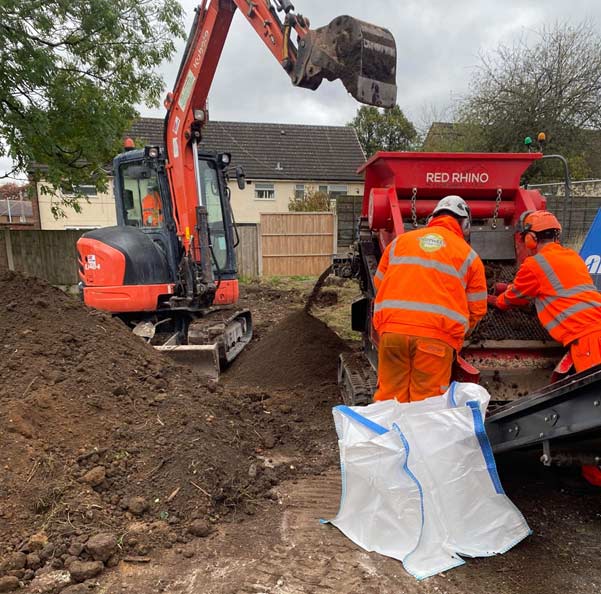JAPANESE KNOTWEED REMOVAL Whitby
5
LIVE KNOTWEED JOBS IN Whitby
16
SUCCESSFUL KNOTWEED REMOVAL PROJECTS IN Whitby
100%
SUCCESSFUL PROPERTY SALES AFTER TREATMENT
5
Whitby BASED KNOTWEED STAFF
Japanese Knotweed Removal Whitby
As one of the most reputable Japanese knotweed removal companies in Whitby, Knotweed Services strives to provide effective treatment services for all weeds that infest your yard.
The PCA is a government-approved trade body for “the damp, waterproofing and wood preservation industries.” Any PCA member will be able to give you the best advice and guidance on controlling and eradicating Japanese knotweed.
Our company has successfully completed large-scale knotweed eradications in and around Whitby and England. To succeed, identification of the species, survey, treatment , and control must all take place. We can help you with your knotweed.
How to Identify Japanese Knotweed
Japenese Knotweed has many negative impacts on the properties it infests. Mortgage lenders are usually unwilling to lend against homes that have an infestation. This impacts both buyers and re-mortgagees because these lenders will not lend against the property.
If you are a homeowner or commercial land-owner, and Japanese Knotweed is on your property, you may have to wait until the invasive plant is removed properly and legally before your project can proceed.
Here's how Japanese Knotweed can affect your life
- Japanese knotweed can grow through tarmac and concrete, posing a structural threat to your building.
- Mortgage lenders often refuse to lend against a building that has Japanese Knotweed growing on it.
- Knotweed causes both physical and economic damage to property.
For customers in Whitby with Japanese knotweed, we should be your first call. We’ll ensure that the knotweed is removed in its entirety and pass along our insurance-backed guarantee (available upon request) against reinfection.



FREE IDENTIFICATION
Fill in the form below, attach your pictures and we’ll let you know if the plant in your picture is Japanese Knotweed.
Call our professionals ASAP to begin the treatment and control of your infestation in Whitby
Call us on: 0121 725 6348 or 0800 689 4146 for an swift idea on cost
From the initial contact, Knotweed Services will walk you through the process.
RESIDENTIAL JAPANESE KNOTWEED REMOVAL Whitby.
WHAT YOU NEED TO KNOW ABOUT JAPANESE KNOTWEED REMOVAL Whitby
Because Japanese knotweed infestations can vary considerably from property to property, it’s not surprising that treatment and control will too. It may be necessary to use one method or a combination of different knotweed removal methods.
We survey your knotweed problem and use the most effective methods for each growth stage, which allows us to deliver high-quality results that will produce a long-term solution. Our methods go beyond chemical treatments to identify root problems and prevent any future occurrences.
— JAPANESE KNOTWEED REMOVAL OPTIONS AVAILABLE IN Whitby

FOLIAR SPRAYING *
The most common treatment is the spraying of powerful chemicals with a knapsack. We ensure that other plants are not damaged. The most effective time for foliar spraying is in Spring.

FOLIAR LEAF WIPING *
With this Japanese knotweed treatment, we use a device to ‘physically wipe’ our chemicals onto the Japanese knotweed leaves. Because this use is so exact, we can often utilise a larger concentration of chemical.

STEM INJECTION
We inject the invasive weed with a small dose of herbicide. This is the most cunning elimination technique since it involves injecting chemicals right into the Japanese knotweed. It is not affected by the weather.

BIOMASS REDUCTION
Biomass is a sort of excavation and removal, but instead of removing all of the soil affected by Japanese Knotweed, we simply remove the afflicted portions. It is an effective strategy for controlling Japanese Knotweed that permits the reuse of the soil. Reducing the amount of waste dumped in landfills.

CROWN REMOVAL
Crown and stems are capable of regenerating and even small fragments of cut crown or stem are capable of regenerating and becoming a new invasive weed – removing these from the equation is a great strategy.
— COMMERCIAL TREATMENT OPTIONS AVAILABLE IN Whitby

SOIL SCREENING
A tried-and-true technique utilised on hundreds of sites throughout the UK.
The rhizome material of Japanese knotweed is isolated from the soil material by means of screening. The Japanese knotweed debris is subsequently transferred to a licenced landfill at a substantially reduced disposal rate, or it is burnt on-site with an exemption D6 from the Environment Agency or Natural Resources Wales.
The cleansed soils can then be reapplied elsewhere, typically in soft landscaping areas where they will not interfere with construction.
This can greatly minimise landfill and backfill expenses while also reducing the site’s carbon footprint due to fewer trips to the dump by vehicle.

BIOSECURITY SUPERVISION
We could send a biosecurity specialist to your site to keep an eye on any soil movements or excavations that can disturb Japanese knotweed.
We can set up a location at the site entry where individuals can wash their boots and equipment as part of these precautions. All toolbox discussions, which will be signed by all on-site contractors involved in the operation, will be provided to the principal contractor by us.
Where biosecurity is required, we may offer ad hoc geotextile barriers.
We will deliver a thorough biosecurity report to the client after the task is finished.
This approach can be utilised in conjunction with several on-site therapy approaches.

EXCAVATION AND DISPOSAL
This treatment method is ideal where time constraints are present and there’s no other option other than to remove both the Japanese Knotweed and contaminated soil to a registered landfill.
By removing all traces of the infestation quickly, this offers a rapid solution to your problem and allows your commercial project to begin groundwork’s almost straight away. When time is of the essence, there is no quicker Japanese Knotweed removal/treatment method.
Any waste taken off-site will be done so with a licensed waste carrier to a suitably authorised landfill site.

CELL BURIAL
Cell burial comprises of moving Knotweed contaminated soil from one location on site, burying it in an excavated pit which is lined with a root barrier membrane, in a different position on the site.
The burial requirements for Japanese Knotweed are as follows:
- The Environment Agency recommends that the top of the burial cell should be a minimum of 2 metres below ground level.
- The overall depth of the burial pit should be in excess of 5 metres deep. All root barrier seams are welded together forming an encapsulated cell from which the Japanese Knotweed cannot escape. Clean soil is then used to backfill on top of the cell.
- To prevent accidental disturbance of the burial site, it is recorded on all site plans and future land owners should be made aware of the location.

STOCKPILE & TREAT
Bundling is a technique used to move contaminated Japanese Knotweed soil to another portion of the site that is being treated. A bund is a small, often 0.5m-deep region of contaminated soil.
For the surface of the bund to be flush with the surroundings, it can be raised, placed on top of the ground, or positioned inside an excavation.
The Japanese Knotweed will be relocated to a less-used region of the site thanks to the bund. When compared to where the Japanese knotweed was first found, this “buys time” for treatment.

HERBICIDE APPLICATION
At Knotweed Services we can provide the client with bespoke treatment plans depending on the locations of the Japanese knotweed.
These plans can work in conjunction with other methods of treatment where access is limited to pedestrian movements i.e., embankments or existing pathways within a site.
This will normally consist of up to 3 visits per annum to apply herbicide by either foliar spray technique or stem injection during the growing season over a period of 3 years, with a monitoring period of 2 years thereafter.
We would select the appropriate herbicides depending on the surrounding foliage or environmental constraints.
After each visit a full treatment record would be provided with photos showing the progress of the works and then an annual report.
